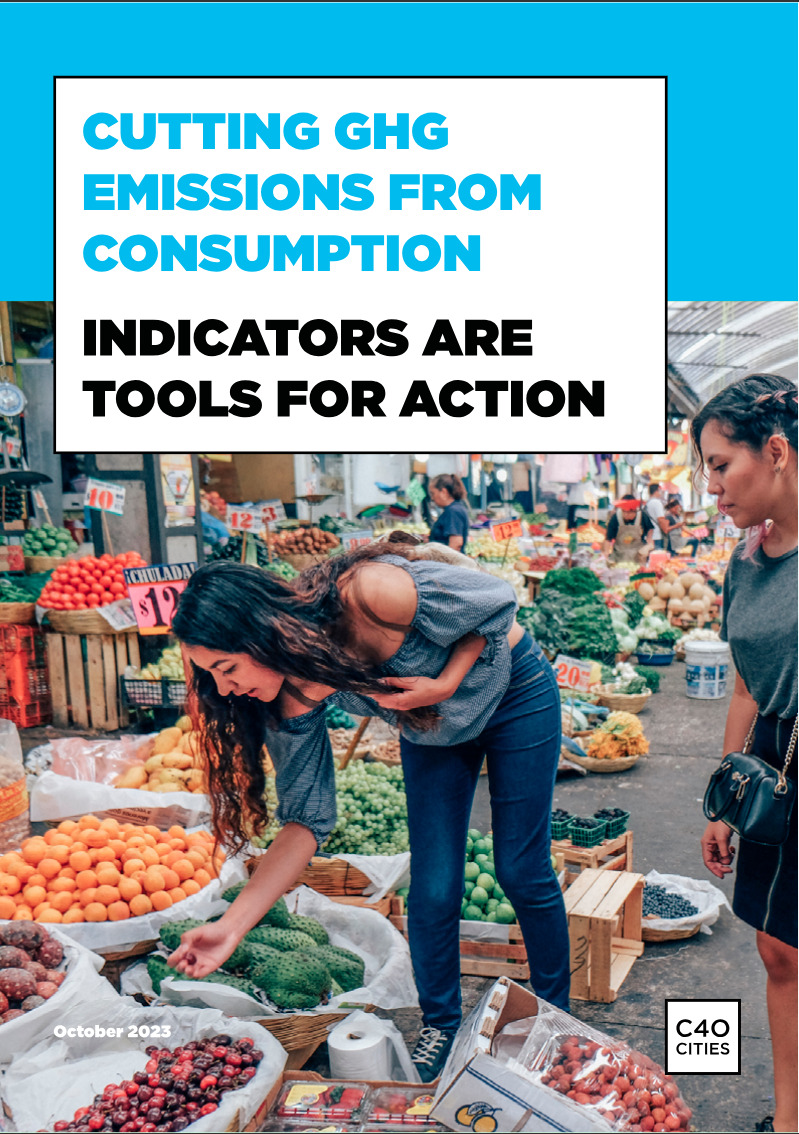How to reduce urban consumption emissions
Most urban climate action plans focus on greenhouse gas emissions generated within a city’s boundaries resulting— from things like heating buildings, fueling cars, and decomposing trash. But emissions related to other everyday activities like eating out at restaurants, traveling on an airplane, purchasing a new phone, and construction of new buildings are also driving the climate crisis.
These consumption emissions—embodied in goods that are produced elsewhere or generated during activities that happen across locations—are not included in many climate action plans because they are hard for cities to track and control.
Many city administrations do not feel like they have the power to track or control these emissions. But cities like New York, London, and Copenhagen are taking action and more cities can too!
A Step-by-step Guide for tracking Consumption Emissions
As a part of a project for C40 Cities, SSG joined a group of consultants and researchers led by EcoDataLab to define data indicators to support cities worldwide in developing and monitoring policies to reduce urban consumption emissions. The team identified over 100 data indicators that can help cities measure and track different aspects of consumption, from credit card spending to vehicle registrations. The final report outlines four key steps for using actionable data indicators to reduce urban consumption GHG emissions.
- Focus. What is the major driver of activity in the City? A fashion capital might focus on reducing emissions related to the fashion industry, while a tourist destination could consider how to reduce emissions related to its visitors. Alternatively, a city that’s growing quickly might focus on reducing emissions from building materials used by the construction industry. For example, Vancouver is working towards reducing embodied carbon in construction by 40% by 2030. An alternative strategy is to focus on sectors that are known to have higher emissions, such as foods and energy use in inefficient buildings.
- Track. Identify indicators and data sources. Reducing emissions and tracking progress requires collaboration with internal partners, including different departments and communications teams, as well as external partners such as industry associations, academia, other levels of government, and data providers. Working together, the city and its partners can identify knowledge gaps and figure out where to source data to improve their understanding of the problem.
- Take action. Use the indicators as a guide to set goals and identify actions. Cities can review existing data and tie specific metrics to specific goals. For example, data on the number of registered vehicles per person could be used to track progress on actions related to reducing car dependency. In cases where no data is available, cities can develop data collections plans to help them track progress.
- Report. Use baselines and targets to track progress. Understanding where a city is starting—the baseline—and setting a target for improvement can help cities track their impact, learn, and adjust. The guidebook recommends developing actions for at least two consumption categories with multiple indicators for each category, as well as incorporating these into a city’s priorities and monitoring, evaluating, reporting, and learning system.
A guidebook with more information is available on C40’s website in English, Spanish, French, Portuguese, and Chinese.





